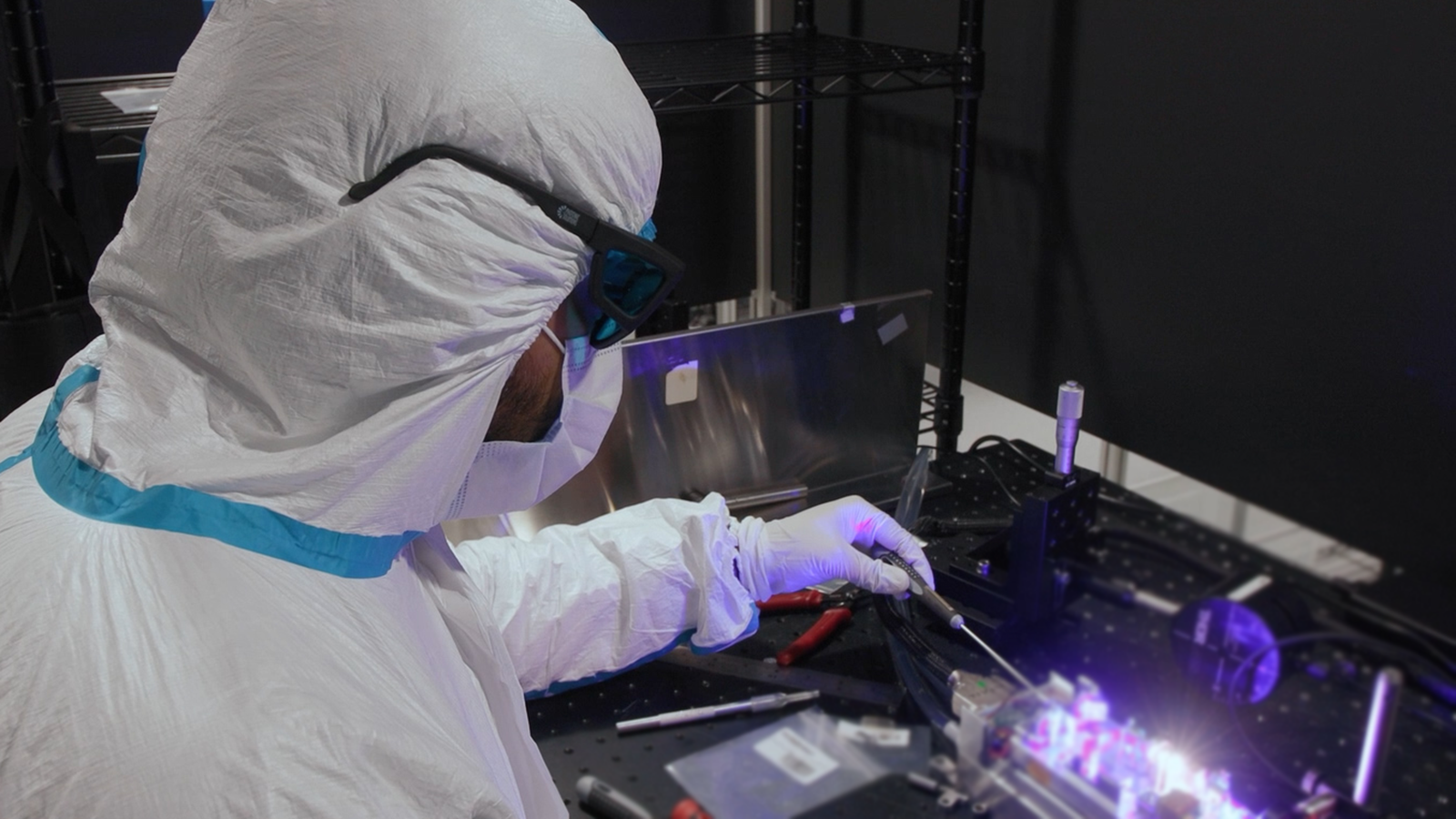UniKLasers Limited, a leading manufacturer of high precision scientific laser instrumentation, has launched its new ultra-violet (UV) laser – The Duetto 349 – a single frequency DPSS CW device which emits at 349 nanometres (nm) with a 50 mW output – making it the world’s first laser to operate with single frequency at 349 nm.

Image Credit: UniKLasers
The Duetto 349 is the latest in a portfolio of laser products that combine the key aspects of high power at an ultra-narrow linewidth, with exceptional spectral and power stability.
This high performance laser can be used across a wide range of scientific research and industrial engineering processes – including complex tasks such as Raman Spectroscopy, Flow Cytometry, Confocal Microscopy, High Precision Optics and Biomedical Engineering - applications where the laser system provides continuous wave (CW) to further enhance engineering precision.
Current UV CW laser solutions for these applications are large, either due to a need for a gas cavity, external doubling cavity, or additional frequency-doubling steps. This hinders integration into existing, established measurement systems where lasers with a small footprint, low ongoing maintenance requirements, and high stability are well suited.
For instance, in the semiconductor field there is a strong trend towards miniaturisation driven largely by modern smartphones or tablets - pushing the industry to develop devices with more functionality packed into a smaller form factor. As the complexity on the wafer surfaces grows, it is essential that these fabricated devices are monitored for optimisation and quality control, both during and after processing.
Critical parameters - such as thin film thickness or non-uniformity in deposition, defects, holes and scratches, overall flatness, deviations in the crystal structure or consistency of doping - can be detected and optimised using several interferometric techniques.
Laser interferometry, and the monitoring of an interference pattern from the wafer surface, is essential for controlling a number of these parameters, as well as laser ellipsometry, which allows sub-wavelength resolution of these features, below the diffraction limit of light. Controlling the accuracy and uniformity of layer thickness optimises the material use, improves performance, and reduces the number of in-process failures - thereby making the manufacturing process more efficient and lowers the cost per unit.
These same techniques can also be applied to other high precision industries - such as optics and precision tooling.
Laser sources used in these applications must be single frequency to ensure a precise interference pattern, where narrow linewidths increase the signal to noise ratio. These lasers also require exceptional spectral and power stability, as well as long coherence lengths, in order to eliminate errors in prolonged measurement and ensure stable operation. Beam quality, such as pointing stability or ellipticity, are also vital for high quality interferometry measurements.
Additionally, the lack of consumables needed for operation with solid state lasers mean that there is little downtime during processing and operation, with no need to stop for the replenishment of the gas used, or refurbishment of other optical components. This allows industry to speed up the production of units and maintain a high yield, while also increasing the quality of measurements made and decreasing the need for complex analysis of the data gathered.
Fedor Karpushko, Chief Technical Officer, UniKLasers, comments,
“This is a major breakthrough and a great achievement by our R&D team. It has been our long-term goal to manufacture a laser product that helps transition from expensive gas lasers which relied on heavy power consumption. In time, we expect the Duetto 349 laser to become industry standard.
One of its key advantages is its smaller footprint which means that it can integrate seamlessly with any current industrial engineering equipment and machinery. Moreover, it will be a strong candidate for a plethora of accuracy-sensitive applications, particularly in life sciences.”
Part of the R&D work on the Duetto 349 has been to engineer the system so the UV source replaces and improves existing sources such as HeCd or third harmonic Nd:YAG lasers - two forms of laser that are capable of producing wavelengths close to UniKLasers’ Duetto 349 in CW (continuous-wave, not pulsed).
The Duetto 349 only uses one non-linear step, as opposed to two, without the need for a Nd:YAG fundamental laser at 1064 nm, making it smaller and more efficient, overall, whereas HeCd – being a large, gas filled laser - produces an output at 325 nm.
Unlike these two legacy laser sources, most lasers in the UV region are pulsed due to crystal damage/degradation so there are few sources capable of producing CW UV output at this wavelength, hence the enormous expectation UniKLasers has regarding the Duetto 349’s performance.
The Duetto 349 CW UV laser is available now for short-term delivery with comprehensive technical support packages. Contact us now to discuss your requirements and intended applications. Further details available at: www.uniklasers.com